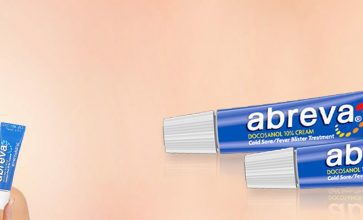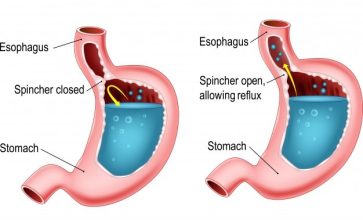Cocaine Withdrawal 101: A Look At The Symptoms
Cocaine may provide a temporary euphoric high, but coming down is far from pleasant. The crash after the high can leave you depressed, anxious, and craving more just to feel normal. This is the insidious nature of cocaine addiction.
However, recovery is possible with proper treatment and support. The first step? Making it through withdrawal.
What to Expect During Cocaine Withdrawal
Cocaine withdrawal symptoms arise because your brain has adjusted to the drug’s presence. When cocaine is removed, your neurotransmitters are depleted, creating a variety of unpleasant effects. Knowing what to expect can help you prepare.
The Early Crash
In the first 1-3 days after the last use, an intense “crash” phase begins. Without cocaine’s euphoric effects, dysphoria sets in and you may feel depressed, fatigued, and have intense drug cravings. Poor concentration, insomnia, irritability, and restlessness are common as well.
Some also experience suicidal thoughts during this time. Having a strong support system and seeking medical help if needed are crucial.
Post-Acute Withdrawal
Even after acute withdrawal ends, some may experience post-acute withdrawal syndrome (PAWS). Lasting weeks or months after quitting, PAWS can include:
- Exhaustion
- Sleepiness
- Mood swings
- Increased appetite
Strong cocaine cravings and depression continue during this time. Seeking counseling and considering medication can help treat depressive symptoms.
People also go on to experience protracted withdrawal sometimes. Protracted cocaine withdrawal symptoms come and go in waves. Support groups, counseling, nutrition, and stress management help manage this extended phase.
Risks of Cocaine Withdrawal
Attempting cocaine withdrawal on your own brings serious risks. Potential dangers include:
Seizures: Cocaine suppresses seizure activity, so abruptly stopping can trigger seizures in vulnerable individuals.
Suicidal thoughts: Depression and hopelessness during withdrawal may lead to suicidal ideation and attempts.
Relapse: Intense cravings and negative feelings put you at a very high risk of using again to self-medicate.
Medically supervised detox provides 24/7 monitoring, medications, therapy, and support to mitigate these risks.
How to Safely Get Through Cocaine Withdrawal
Getting clean and sober requires navigating withdrawal. With the right help, this difficult but temporary phase can be managed. Here’s how to start:
Choose medically supervised detox: Around-the-clock medical care ensures withdrawal safety and comfort. Medications treat symptoms like anxiety, insomnia, and depression as well.
Consider inpatient rehab: After detox, inpatient rehab provides intensive counseling, life skills building, and social support for lasting recovery.
Seek counseling and therapy: Individual and group therapy help process emotions, build coping strategies, and address underlying issues fueling addiction.
Attend support groups: Connecting with others in recovery provides mutual understanding and a forum to share constructive tips. Groups like Cocaine Anonymous use 12-step principles.
Develop healthy habits: Proper rest, nutrition and exercise help repair cocaine’s damage and relieve PAWS symptoms. Discover new hobbies and activities to fill your free time.
Avoid triggers: Stay away from old drug-using friends or environments and build a sober network. Triggers can quickly derail recovery.

Treating Cocaine Withdrawal Symptoms
Getting through cocaine withdrawal safely often requires medical treatment and psychological support. A combination approach treats body and mind for improved recovery odds.
The Abstinence Period
The early abstinence period is often the most difficult and dangerous phase. Medications can help ease symptoms and reduce risks. They often include beta blockers like propranolol to control blood pressure and heart rate and benzodiazepines to reduce anxiety, insomnia, and seizures. You may also get antidepressants to relieve depressive symptoms.
Medical supervision ensures proper medication use for maximum benefit.
Relapse Prevention Period
The relapse risk remains high long after acute withdrawal. Maintenance medications help reduce cravings and prevent relapse. They may include Naltrexone which blocks cocaine’s euphoric effects if used and Modafinil which reduces fatigue and improves concentration. Again, medical oversight ensures optimal results and avoids complications.
Psychological Treatment for Cocaine Withdrawal Symptoms
Therapy and counseling address the psychological symptoms and underlying issues related to addiction.
Dual Diagnosis Treatment
Many with addiction have co-occurring mental health disorders. Integrated treatment for both conditions as “dual diagnosis” leads to better outcomes.
Behavioral Therapy
Research shows behavioral therapies effectively support recovery. Cognitive behavioral therapy changes thought patterns while contingency management provides rewards for sobriety. Meanwhile, motivational enhancement therapy encourages commitment.
Overall, ongoing therapy empowers healthy coping strategies for long-term success.
Cocaine Withdrawal Symptoms: Summing Up
Cocaine withdrawal may feel unbearable, but you don’t have to face it by yourself. With compassionate, evidence-based treatment at a dedicated rehab center, you can pass this obstacle on your path to lifelong sobriety. The rewards of health, happiness, and reconnecting with loved ones make pushing through withdrawal well worth the struggle.
Read Also:






















